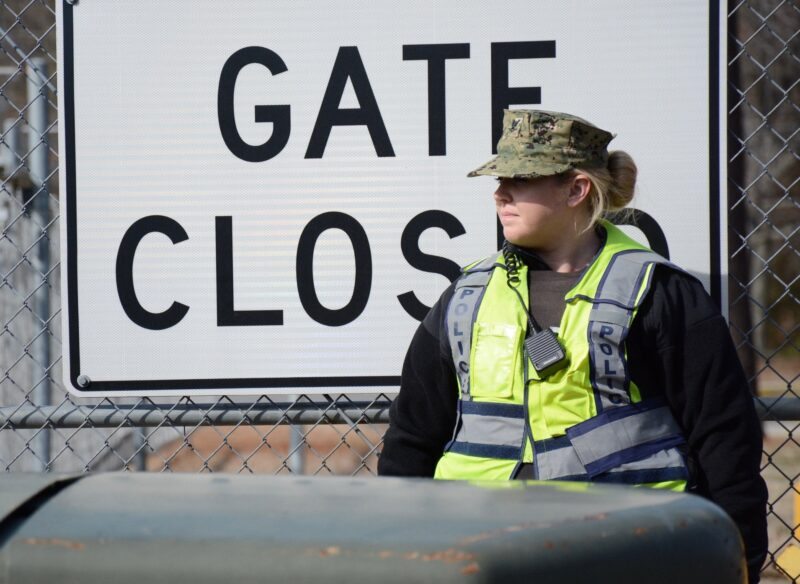 Citadel Shield-Solid Curtain (CSSC), the Navy’s annual anti-terrorism, force protection (ATFP) exercise, will be underway Navywide – and at NAS Patuxent River – Jan. 31-Feb. 11, 2022.
Citadel Shield-Solid Curtain (CSSC), the Navy’s annual anti-terrorism, force protection (ATFP) exercise, will be underway Navywide – and at NAS Patuxent River – Jan. 31-Feb. 11, 2022.
Conducted by U.S. Northern Command (NORTHCOM), Commander, U.S. Fleet Forces Command, and Commander, Navy Installations Command (CNIC), CSSC uses realistic drills and scenarios to enhance the readiness of Navy security forces and ensure seamless interoperability among the commands, other services, and agency partners.
“The exercise, which plays out over a two-week period, tests our Emergency Training Plan and pre-planned responses (PPR), and it’s a continuation of training for our ATFP security forces,” explained Matt Nalley, Pax River’s installation training officer. “It allows us to evaluate whether we have the correct procedures in place in the event of an emergency situation; and any drills involving an integrated response will show how well departments such as security, fire, emergency management, and public works communicate and work with each other.”
Week one’s Citadel Shield focuses on installation-level training, and all scenarios will occur entirely within the Pax River fenceline. In the past, those scenarios have included active shooter, hostage situation, gate runner, unmanned aerial surveillance, mass shooting, protesters at the gate, suspicious package, and release of a biological weapon, among others.
In addition to hearing sirens or seeing emergency vehicles on the road responding to drills in progress, Pax personnel can expect to receive advance emergency response notifications multiple times over a number of days and might, at times, be inconvenienced.
“We won’t be doing anything around high traffic times; we do our best to minimize disruption, but personnel might experience gate delays or temporary changes in traffic or parking patterns as the different scenarios play out,” Nalley noted.
The Solid Curtain portion, occurring during the second week, is a national-level exercise centered on command, control, and communications between all echelons Navywide where everything that happens at one installation affects every other installation, even if only in a minor way.
For instance, if leadership – NORTHCOM, U.S. Fleet Forces Command, or CNIC – sees trends or incidents going on in one or more areas that they feel may also impact a different area, they can selectively put installations, regions or the entire NORTHCOM area of responsibility into a heightened force protection condition.
“That might again prompt further delays, closures, and emergency notifications at Pax,” Nalley said. “We ask people for their patience and remind them that the ultimate purpose of these training exercises is to ensure the protection of those who work and live onboard the installation.”
The CSSC exercise will be conducted with Health Protection Condition Level (HPCON) Charlie measures built in to the training events to eliminate the spread and transmission of the COVID-19 virus.


